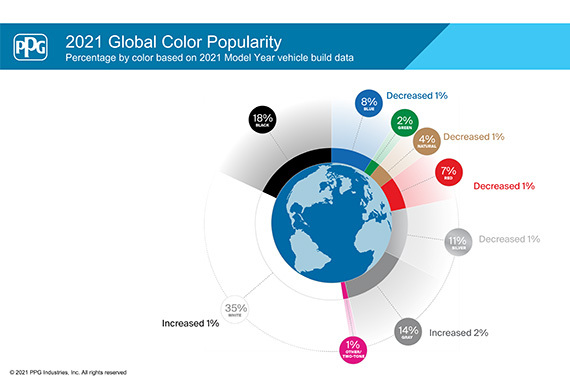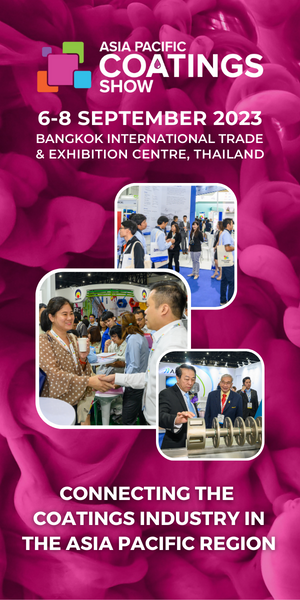
PPG has released its 2021 automotive colour popularity report, which highlights increased demand for two-tone finishes, personalised colours and other emerging trends among car buyers.
"It’s fitting that two-tone finishes would come back into favour during this time when we as a society are looking to the past,” said Misty Yeomans, PPG Color Styling Manager, automotive OEM, Americas. "Along with special-order colours, tinted clearcoats, tri-coats and matte finishes, two-tone finishes better reflect vehicle owners’ individual preferences and personalities.”
Although two-tone finishes were common in the 1950s and 1960s, conventional colour development and application processes made them increasingly impractical in mass production environments. The traditional process for achieving a two-tone finish requires labour-intensive masking of the vehicle body and multiple runs through the paint shop. PPG has helped global OEMs overcome this challenge through a breakthrough application technology that produces crisp paint edges without the use of masking and other time-intensive steps.
PPG’s precision application process can reduce paint shop application time by approximately 50 minutes per two-tone vehicle. It supports customer sustainability goals by reducing carbon dioxide (CO2) emissions and eliminating the need for energy-intensive air-filtering systems to handle overspray. Color personalisation is also enabled through PPG advancements in digital colour styling, which dramatically reduces the time to market for new colours.
Other trends highlighted in the PPG report are rising popularity of greys, blues, greens and violets, with vibrant new colours more likely to debut on sporty models rather than SUVs and pickups.
Green, with its connection to nature, sustainability and inclusiveness, remains strong worldwide. This will continue to be an important colour space for the automotive industry.
"Green is also seen as a ’traffic light’ colour, acting as a signal for everyone to go forward – it’s safe and we can trust this colour,” Yeomans said. "Green has two directions. One is sporty, fresh and vivid. The other is organic and darker, with deeper tones developed or designed as dark luxury greens yet still with a sporty and fresh attitude.”
From a global perspective, white (35% of vehicle builds) and black (18%) continue to be the predominant choices of car buyers, while demand for greys has increased 2% in each of the past two years. Blues remain strong at 8%, while reds dropped to 7% of builds. This was led by a 1.5% drop among North American consumers.
PPG also sees increased emphasis on taking a holistic approach to vehicle styling.
"We consider all surfaces and features of the vehicle as part of our colour styling process,” said Yeomans. "As one example, we’re seeing increased use of specialised wheel coatings and colours to complement the styling cues of the vehicle body.”
PPG’s unique position as a global colour leader enables the company to observe and translate emerging colour trends for customers’ applications – from consumer goods to automotive colour and residential to commercial and industrial design. Using this fact-based approach, PPG colour experts help customers generate colour ideas based on cultural and demographic trends. The resulting colour technologies coat a wide range of materials and surfaces, shorten development cycles and bring more desirable and better-looking products to market faster.




